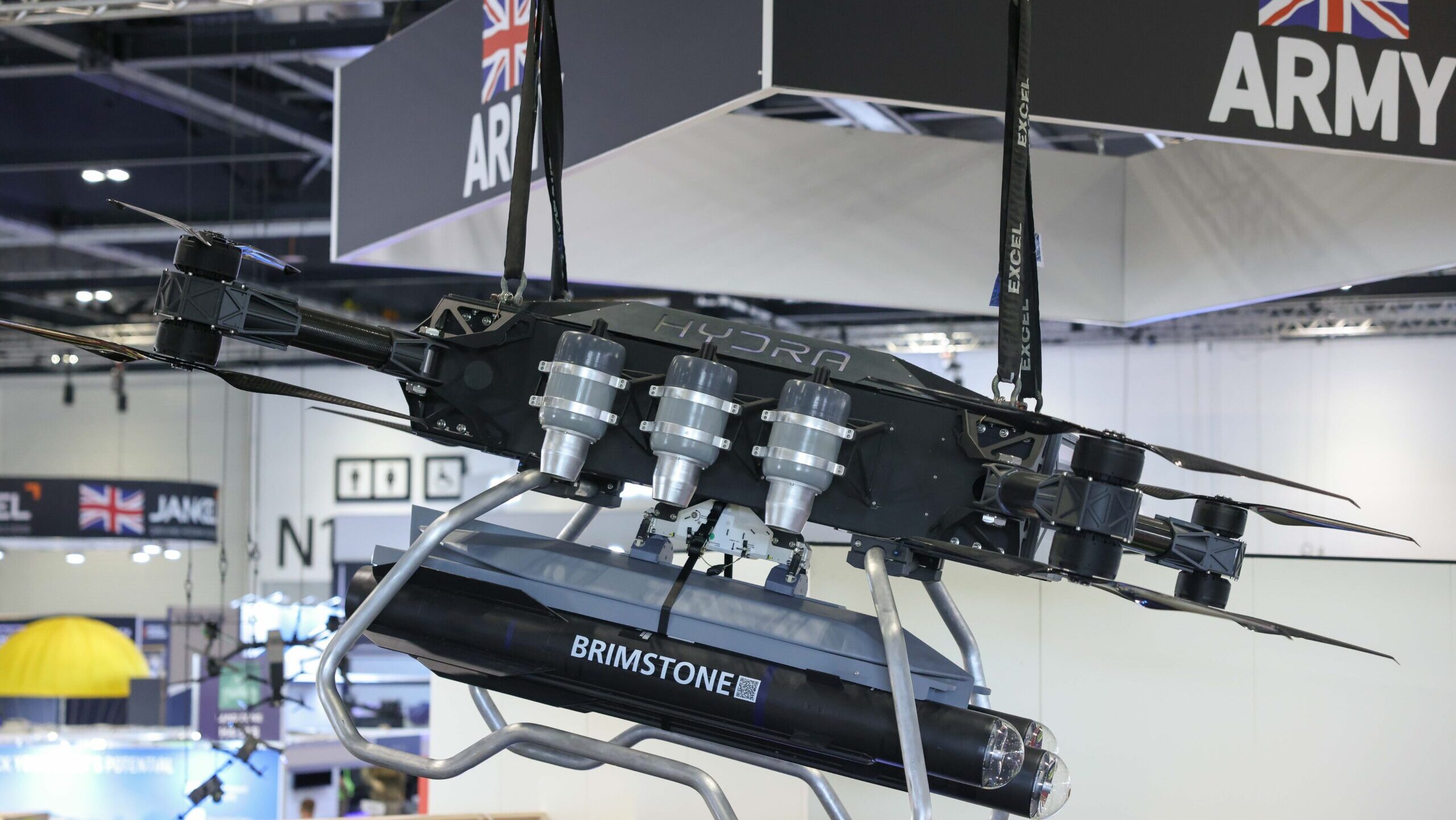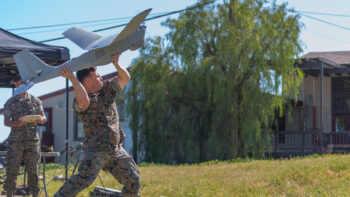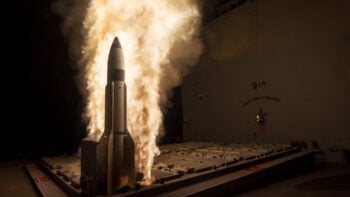
A Hydro 400 small UAS armed with MBDA Brimstone missiles on display by the British Army (UK MoD)
LONDON — The British Army has rapidly accelerated the number of weaponized drones flown in designated UK airspace as it seeks to identify technologies and concepts of operations suited to supporting reconnaissance and precision strike operations in urban environments.
Similar technologies have proven extremely popular and successful during combat operations in Ukraine where everything from low cost, commercial and modified drones through to more complex and expensive loitering munitions continue to be used to identify and target dismounted and mounted personnel during the day and at night.
According to the Ministry of Defence (MoD), British Army UAS operators had only flow Defendtex’s D40 weaponized UAS in UK airspace back in 2022.
But as part of the Army Warfighting Experiment (AWE), British Army and Royal Air Force UAS operators assigned to the Infantry Trials and Development Unit (ITDU) recently demonstrated an additional six types of UAS and “lethal, one-way effectors,” a British Army spokesperson confirmed to Breaking Defense. Held annually, AWE provides the army with an opportunity to test new industry equipment.
Platforms flown in the airspace above New Zealand Farm Camp and Copehill Down Village at the Salisbury Plain Training Area (SPTA), Wiltshire, included Israeli Aerospace Industries’ (IAI’s) Rotem and Rheinmetall’s Exploratores. Other solutions included Aether’s Strike One and XTEND’s Wolverine small UAS, both of which deliver payloads using a dropping mechanism.
Also deployed were Hybrid Drones’ Hydra heavy lift, hybrid electrical/jet turbine UAS, which is capable of carrying larger payloads including current in-service munitions, and Wright Airborne Computing’s Midge low-cost small UAS.
Speaking to Breaking Defense after the event, the army spokesperson described how the AWE Urban Series was designed to optimize “British Army effectiveness in the urban environment,” having initially started in 2022.
“Tactical vignettes based on the Land Operating Concept and lessons identified from ongoing operations around the world have formed the platform from which to generate credible evidence for exploitation,” the spokesperson added. “This evidence will further inform the concept of recce-strike at all levels as outlined in the Land Operating Concept; urban operations doctrine development and human-machine teaming, while also acting as a technology horizon-scanning tool.
The spokesperson also explained that the UK MoD’s indoor uncrewed experimentation center was used to “broaden the envelope” of testing.
An industry official present at the event also suggested this had been the first time the British Army had operated a loitering munition in an “attack phase” at a UK range although exercise vehicles used an inert payload.
“What they demonstrated was dependent on weather, air space restrictions, tasked with attacking targets inside and outside buildings,” the official added.
Loitering munitions being considered in the AWE are not expected to be procured in new programs of record. Instead, they are being trialed to influence future requirements, a defense source informed Breaking Defense.
The UK MoD has had a checkered history when it comes to loitering munition technologies. According to the MoD’s Annual Report and Accounts 20217-18 document [PDF], the Fire Shadow munition program was cancelled at a cost of more than £95 million ($121 million).
The Fire Shadow was unveiled in 2007 to support beyond-line-of-sight, precision strike operations. The MBDA-led system had an operating range of more than 150 kilometers and capability to loiter for more than 10 hours over the battlespace.
However, in 2021 the MoD completed a $45 million Foreign Military Sale with the US Government for Aerovironment’s family of Switchblade loitering munitions, which is available in anti-personnel and anti-soft skinned vehicle (Switchblade 300) and anti-armor (Switchblade 600) configurations.
The British Army continues to learn lessons from the ongoing war in Ukraine where the employment of loitering munitions and weaponized drones is commonplace. The Ukrainian Armed Forces employ a wide range of loitering munitions including Switchblade 300 and 600 as well as WB Group’s Warmate system.
Addressing the UK’s Defence Committee on 11 January 2023, Lt. Gen. Sharon Nesmith, Deputy Chief of the Defence Staff, explained how the army was reconsidering uncrewed systems, deep fires and intelligence, surveillance, targeting and reconnaissance (ISTAR) capability gaps.
Nesmith also highlighted the MoD’s Future Soldier concept which will invest £41.3 billion ($50.4 billion) in British army procurement and support by 2030.
Air Force stands up two new EW squadrons, but still short on personnel
“We have recognized in our threat analysis that we need these capabilities in our wing in order to make our three wing missions executable,” Col. Joshua Koslov said of activating two EW squadrons. “And so that’s exactly what’s driving it.”



























